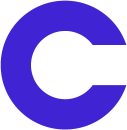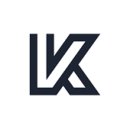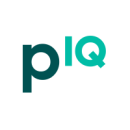If employers peer into a crystal ball to see the future of work, there’s not a cloud in sight. That’s because what employees want is perfectly straightforward.
Employees want to work wherever and whenever they feel the most productive and engaged. Work must offer flexibility, autonomy and a strong work-life balance.
That’s according to Gallup, which recently found that 38 percent of fully remote workers prefer a hybrid structure and 60 percent of remote-capable employees want a hybrid environment. And of all the remote-capable workers out there, just nine percent wish to go back to the office. Local companies like Clearcover, Kalderos, MVMNT, PatientIQ and QuantumBlack are listening. And they’re developing holistic hybrid work policies that give employees the balance they desire.
As pandemic restrictions fade, flexibility isn’t the only name of the game. That means employers need to consider how to engage and support employees, whether remote or in-person, through team building, benefits that reflect their work environment, supportive management and a strong company culture.
Companies that go hybrid combine the flexibility and autonomy of working from home with in-office experiences that allow collaboration and connection. The hybrid model further cultivates a high level of trust and a sense of ownership.
Five Chicago tech leaders aren’t relying on predictions to rewrite the playbook on work. Instead, they’re leaning on human-centered design, employee feedback and trust to bring snippets of the past into the future.
Clearcover is a digital car insurance provider.
How would you describe your current work model?
At Clearcover Insurance Company, we recently created a remote-first policy, which demonstrates our commitment to the future of work. Clearcover is dedicated to creating a people-first culture with a remote-first work model. As we experience one of the largest workplace revolutions in recent history, today’s workers are interested in having more freedom to work how and when they feel most productive. Prior to March 2020, 20 percent of our workforce was remote. Today, our workforce has grown to more than 500 employees, with more than 65 percent working remotely. Our remote-first mentality takes a holistic view of our policies and processes. We developed and deployed protocols so everyone has equal access to company information. All channels of communication are open and flexible, whether our employees are sitting at a workstation at our Chicago headquarters, in their home offices across the country or in a local coffee shop.
How often are employees expected to come into the office, and why does this schedule work for Clearcover?
As a technology-driven company, our company culture is rooted in our digital-first workforce. In order to feel connected, engaged and supported, we have committed to using the most effective communication and collaboration tools — like monthly virtual all-hands meetings — which bring our organization together for updates, wins and fun.
We encourage virtual meetups, happy hours and team-building activities, and we have a variety of communication channels. Slack helps us communicate efficiently and to socially connect with co-workers on special interests. We have a channel called “Praise” where employees recognize their co-workers’ achievements and hard work.
Our people-first mentality encourages us to listen to how our teams are feeling in regard to both their mental health and overall satisfaction with our company culture. Employee engagement surveys provide feedback about overall happiness. We ask, listen and are laser-focused on maintaining a positive workplace culture. Clearcover won a 2021 Comparably Award for “Best Company Happiness” and has been named a 2021 and 2022 Built In Chicago “Best Place to Work.”
Today’s workers are interested in having more freedom to work how and when they feel most productive.”
What are the key cultural or organizational ingredients that make your hybrid model work?
We believe in trust. It’s core to the DNA of our brand. We prioritize customer confidence as it relates to our pricing, products and services, and we operate from a place of transparency as it relates to our employees, as well. It’s important to keep employees engaged and excited about their roles; creating a culture of trust is essential to maintaining a productive remote-first work environment. To support our remote employees, we offer a variety of benefits. Each month, employees receive a $45 snack credit at SnackMagic, which allows them to order healthy snacks online and have them delivered right to their front doors. Additionally, each remote employee receives a $250 stipend to upgrade their personal home office space. For those who prefer an office environment, we welcome local employees to return to the Chicago headquarters. Just like any playbook, ours will change over time. Its dynamic nature will evolve; we’re agile and flexible. Listening to our employees and operating from a people-first perspective makes working in a remote-first environment second nature.
Kalderos is a healthtech company that provides a SaaS-based drug discount management solution.
How would you describe your current work model?
Our work model is based on a “choose your own adventure” mentality, with the understanding that we’ll all be prepared to gather together when it makes sense for the organization and each team member’s personal situation.
We’re piloting “Kalderos Working Modes.” Jessica Bogart Kasper, our director of organization and culture design, leads this project. Jessica has a background in human-centered design, which uses a research-based methodology to create solutions that reflect an understanding of who and what we’re designing for. She’s applied those principles to research, prototype, test and develop this approach.
Kalderos Working Modes give every employee the opportunity to choose their “mode” — fully remote, a few days a month in the office or a few days a week in the office. Then we design a package of perks to support that choice. Those who want to come into the office more often get an assigned desk and a commuter reimbursement. Those who choose to be fully remote get a monthly reimbursement to set up their home office according to their preferences. So far, the feedback has been overwhelmingly positive.
How often are employees expected to come into the office, and why does this schedule work for Kalderos?
We believe our team members will know when it’s the right time to get together. Some projects just go better when we gather together to knock out some details and have some fun, but we know that the work can go on even if everyone is not physically present. Over the last two years, we have all learned how to engage the virtual team. What that usually looks like is everyone participating in the same virtual meeting, whether they’re in the room or not. It works!
Expectations about workplace presence are a thing of the past. We believe it should be what is best for your work style. We trust our team members to make the best decisions that balance personal needs with the needs of the company.
We learned that we could run our company throughout the height of the pandemic without ever being together. We also believe people actually want to get together every now and then. We empower our team members to make the decisions about when those in-person gatherings occur. When they happen, they’re viewed as a perk, not as a requirement.
We trust our team members to make decisions that balance personal needs with the needs of the company.”
What are the key cultural and organizational ingredients that make your hybrid model work?
First, humility. We are not yet sure that this hybrid work model will be successful over the long term. We are trying to do the very best we can for our team members and our company at the same time. To do that, we’re applying principles from human-centered design, which involves a lot of listening, testing and iterating. Humility means continually being willing to evolve our approach based on what our teams are telling us about what works best for them.
Second, trust. We trust our team members to make good decisions about virtual versus physical presence. We treat them like the fellow owners in the company that they are, and do all we can to support them wherever they might be working. In turn, we ask them to be fully present, wherever they might be.
Finally, pragmatic realism. Keep it simple. Acknowledge reality. Assume positive intent in others. People will want to be a part of a team that works like this, and they will want the team to be successful. This is the bet that we’re making as we emerge from the pandemic.
MVMNT is a startup that helps shippers and carriers manage shipments from start to finish.
How would you describe your current work model?
We encourage employees to do what makes sense. Like most companies, we are still adjusting to this new, ever-changing work environment and don’t intend to lock ourselves into any specific work model quite yet. If there are meetings that require brainstorming, strategic planning or making business decisions, in-person sessions are highly recommended. However, if team members need to get a lot of work done or have minimal meetings, then working from home is ideal. Bottom line: we’re flexible.
How often are employees expected to come into the office, and why does this schedule work for MVMNT?
Being a startup, we try to be around each other as much as possible since our business is quickly evolving. We try to get the whole team together at least once a month for a team activity to strengthen our relationships, but the rest is up to the team or person.
However, our team is growing rapidly, so the more frequently we can get together, the better. We are currently creating a schedule that reflects the thoughts and ideas of our employees and how it can be beneficial for all moving forward.
Constant communication is key.’’
What are the key cultural or organizational ingredients that make your hybrid model work?
Constant communication is key. We use Discord as our primary method of communication, which allows for real-time updates and faster approvals or answers to questions. By encouraging employees to keep that flow of communication, we ultimately spend less time in meetings and more time executing.
We treat each other as professionals. We trust each other to do the job we’re assigned and keep open lines of communication to ensure efficiency and reliability.
PatientIQ is a healthtech platform dedicated to improving patient outcomes.
How would you describe your current work model?
To me, remote-first is as simple as always assuming that someone who will be attending a meeting will not be physically with you. At PatientIQ, every meeting invite always has a virtual meeting room. When there’s a hybrid meeting, everyone who is in the office joins the call so we can see who’s physically in the room in addition to remote attendees. Remote-first means expanding the candidate pool for open positions to the widest audience possible.
Remote-first means expanding the candidate pool for open positions to the widest audience possible.’’
How often are employees expected to come into the office, and why does this schedule work for PatientIQ?
We create regular opportunities to get the team together in the office. Typically, this means some type of quarterly gathering with enough notice for people to make plans well in advance.
The employees who live close to our office in Chicago are empowered to decide when they want to come in. That helps them be as productive and happy as possible. We’ve found that collaboration and team chemistry has far more to do with aligning on what’s important and what our goals are than having rigid rules around when people need to be in the office.
What are the key cultural or organizational ingredients that make your hybrid model work?
The number one organizational ingredient to make a hybrid model work is alignment. When everyone understands the strategic context in which we’re operating, what’s important and why, everything else falls into place with ease. It still takes work, but without that alignment, everything will be unnecessarily challenging.
From a cultural perspective, you have to trust the people on your team. Make the problems your company needs to solve clear, provide the support and feedback your teams need to solve those problems, and whether you’re in the office, hybrid or remote-first takes a back seat.
QuantumBlack, the AI branch of McKinsey & Company, provides advanced data analytics services to various companies.
How would you describe your current work model?
Office-occasional. The official return from remote began March 1, 2022. Our firm has been diligent about implementing Covid-19 safety protocols in offices and sharing the latest guidance and resources with colleagues. Within one month of the return to offices, weekly attendance reached 2019 levels and there has been positive feedback on experience and connectivity.
It’s important that we embrace new and creative ways of connecting both in person and virtually.”
How often are employees expected to come into the office, and why does this schedule work for QuantumBlack?
Client-facing colleagues are intentional about where and how they work with their teams and clients by aligning on team norms upfront in team talks. Many teams are taking advantage of alternating weeks between working from home and working in a McKinsey office or at the client site so they can take advantage of team learning, apprenticeship and in-person connectivity. Non-client-facing colleagues connect with their functional team leaders on their team’s new working norms and look for ways to make their time in the office more intentional.
What are the key cultural or organizational ingredients that make your hybrid model work?
With the return from remote, local offices have organized a number of virtual and in-person events to bring the community together. QuantumBlack continues to host weekly virtual meetings where teams share project updates, celebrate colleagues’ achievements and personal milestones and introduce newcomers. The key is understanding that different colleagues have different needs and preferences so it’s important that we embrace new and creative ways of connecting both in person and virtually.















